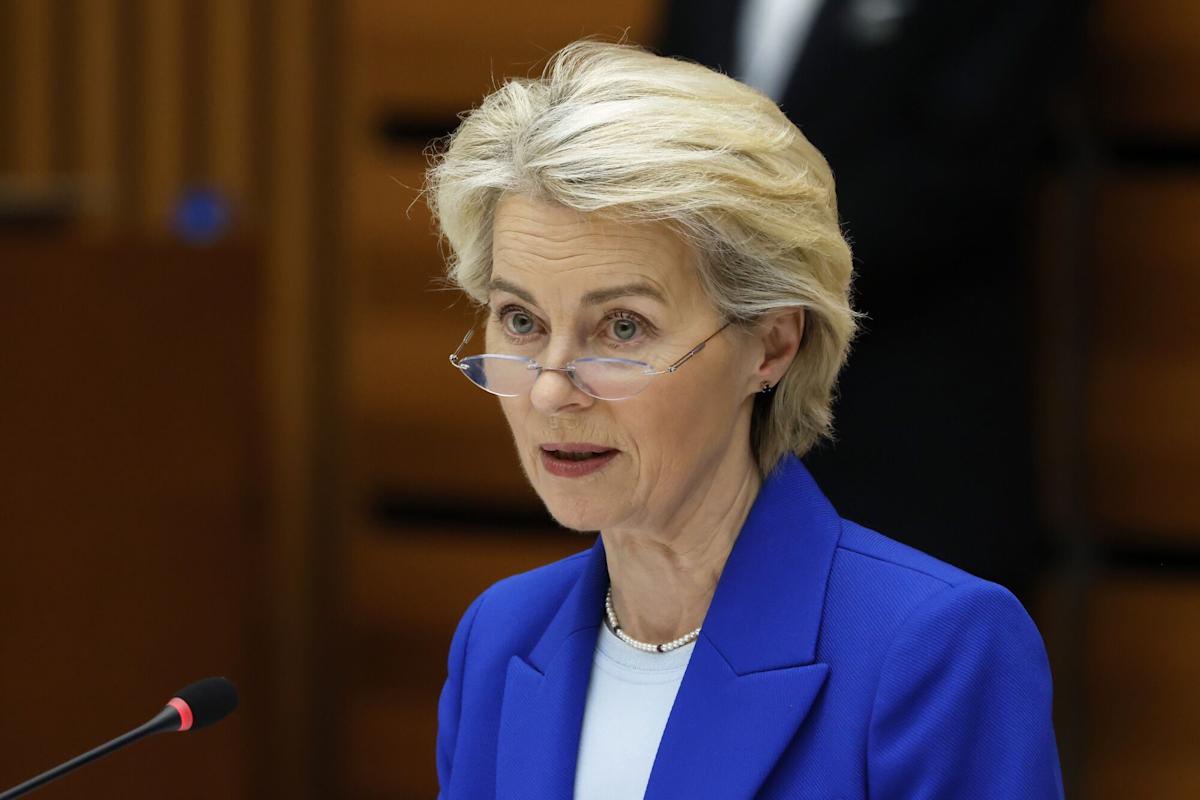(Bloomberg) — European Commission President Ursula von der Leyen said she will travel to Scotland this weekend to meet with US President Donald Trump, as the two sides aim to conclude a trade deal ahead of an Aug. 1 deadline when 30% tariffs on the bloc’s exports are otherwise due to kick in.
Most Read from Bloomberg
After months of talks and shuttle diplomacy between Brussels and Washington DC, the two sides have been zeroing in on an agreement this past week that would see the EU face 15% tariffs on most of its trade. Limited exemptions are expected for aviation, some medical devices and generic medicines, several spirits, and a specific set of manufacturing equipment that the US needs, Bloomberg previously reported.
Steel and aluminum imports would likely benefit from a quota under the arrangements under discussion but above that threshold they would face a higher tariff of 50%.
“We’ll see if we make a deal,” Trump said as he arrived in Scotland on Friday. “Ursula will be here, highly respected woman. So we look forward to that.”
Trump reiterated that he believed there was “a 50-50 chance” of a deal with the EU, saying there were sticking points on “maybe 20 different things” that he did not want to detail publicly.
“That would be actually the biggest deal of them all if we make it,” the president said.
Trump gave similar odds of an agreement with European negotiators in Washington before leaving, but also said the EU had a “pretty good chance” of reaching an agreement.
Trump announced tariffs on almost all US trading partners in April, declaring his intent to bring back domestic manufacturing, to pay for a massive tax-cut extension and to stop the rest of the world from taking advantage of the US. He has also sought to remove what he describes as barriers for American companies to do business around the world.
Alongside a universal levy, the US president has hit cars and auto parts with a 25% levy, and steel and aluminum with double that. He’s also threatened to target pharmaceuticals and semiconductors with new duties as early as next month, and recently announced a 50% tariff on copper.
The EU has been seeking quotas and a ceiling on future sectoral tariffs that the US has yet to implement but it’s unclear if an initial agreement will shield the bloc from potential future levies at this stage.
Story Continues
The agreement would also cover non-tariff barriers, cooperation on economic security matters and strategic purchases by the EU in sectors such as energy and artificial intelligence.
The terms of any initial deal, which is expected to take the form of a short joint statement, would need to be approved by member states, according to people familiar with the matter. The statement is seen as a stepping stone toward more detailed negotiations.
Because of the ongoing uncertainty, the EU has in parallel put together countermeasures in the event of a no-deal scenario, which would see it quickly hit American exports with up to 30% tariffs on some €100 billion ($117 billion) worth of goods — including Boeing Co. aircraft, US-made cars and bourbon whiskey — in the event of no-deal and if Trump carries through with his threat to impose that rate on most of the bloc’s exports after Aug. 1 or in future. The package also includes some export restrictions on scrap metals.
In a no-deal scenario, the bloc is also prepared to move forward with its anti-coercion instrument, a potent trade tool that would eventually allow it to also target other areas such as market access, services and restrictions on public contracts, provided that there is a majority of member states backing its use.
While Trump didn’t explicitly link negotiations to non-trade matters on Friday, he did suggest that he planned to raise concerns over migration flows. Trump has imposed strict anti-immigration policies since returning to office, carrying out a mass deportation effort of those in the US illegally while also reducing pathways to legally move to the US.
“You got to stop this horrible invasion that’s happening to Europe, many countries in Europe,” Trump said, adding that he believed “this immigration is killing Europe.”
(Updates with Trump remarks in paragraphs 6, 15-16)
Most Read from Bloomberg Businessweek
©2025 Bloomberg L.P.

